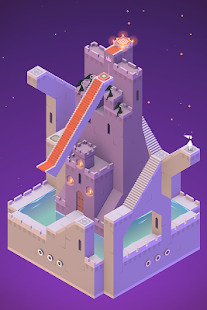A neural network turns pixel pictures into photos
Web Services Internet / / December 30, 2020
A free tool based on the neural network Face Depixelizer has become available on the Web, which turns even small and highly pixelated images into realistic portraits. It was created and posted on the Web by Russian developer Denis Malimanov.
Face depixelizer
Given a low-resolution input image, model generates high-resolution images that are perceptually realistic and downscale correctly.
😺GitHub: https://t.co/0WBxkyWkiK
📙Colab: https://t.co/q9SIm4ha5pP.S. Colab is based on thehttps://t.co/fvEvXKvWk2pic.twitter.com/lplP75yLha
- Bomze (@tg_bomze) June 19, 2020
The system works according to the following principle. The neural network receives an image and enlarges it in size. Then it goes through faces from the StyleGAN database (it contains realistic photos of people who never existed) until it finds one that, when reduced to its original size, will look like the original picture. This is clearly demonstrated by the gif in the post above.
It is not necessary to use photographs of people. This is what BJ Blaskowitz looks like, a Wolfenstein hero.
With default settings, I got this result. pic.twitter.com/mRkqqTwhJF
- Bomze (@tg_bomze) June 20, 2020
And so - Doomgay from the first Doom.
So that one is Wolfenstein, here is Doom pic.twitter.com/ixpItQyJ5q
- Hani ✊🏽🧢 (@h_bash) June 20, 2020
Well, where is it without Minecraft.
what a nice tool 👏 hello minecraft dude pic.twitter.com/hLRK1UljNf
- Moritz Klack (@moklick) June 20, 2020
While the photos above look good, there are quite a few absolutely damn images that came out.
hem hem. pic.twitter.com/Mx4MMhCy5c
- Elyën (@dehors_dedans) June 20, 2020
Woah. pic.twitter.com/vOR5ruxEnJ
- Baptiste le confiné (@BaptisteJRobert) June 20, 2020
😱 pic.twitter.com/WR3Rv4eJL7
- Jérémy Fa (@jeremyfaivre) June 20, 2020
Mario has no luck with this neural network at all.
Well pic.twitter.com/LXjqvUl17t
- Antoine Dalmières (@adalmieres) June 20, 2020
Super Mario 😁 pic.twitter.com/DRTduzd4kX
- Chicken3gg (@ Chicken3gg) June 20, 2020
And some of them are just weird and wrong.
Karen, revealed. pic.twitter.com/HtM1YD3afO
- Shawn Wheatley (@swheatley) June 20, 2020
oh my god i can’t stop pic.twitter.com/SzwJwwI3XY
- Isaiah (@papaabar) June 20, 2020
Emoji went into action.
🤔 pic.twitter.com/ah9fcCtd6u
- Mohimont Lucas (@MohimontL) June 20, 2020
I love that your Tweet turned into a giant collaboration thread with everyone posting their own hilarious upscales. My favorite so far is this 😅 guy.
(If you want to get similarly creative interpretations keep the steps low.) pic.twitter.com/sX7uyrFybY
- Jonathan Fly 👾 (@jonathanfly) June 20, 2020
Thanos is not the same.
pic.twitter.com/7JOPe9qxnL
- Mohimont Lucas (@MohimontL) June 20, 2020
Bonus - Link with lack of sleep.
Link, having a hard life and a lack of sleeping time pic.twitter.com/SculrPKuFK
- Antoine Dalmières (@adalmieres) June 20, 2020
In the comments, the user clarified whether such a tool would be used to recognize people whose faces are hidden in photos and videos for their safety. The author replied that the purpose of the neural network is not to restore the source, but to find a suitable face among the people who never existed - so the program will not be able to identify anyone (although it can catch some facial features).
This tool will not restore the original face, however, it can help with the identification of facial features.
- Bomze (@tg_bomze) June 20, 2020
At the time of publication, the service is temporarily unavailable due to exceeding the download limit in Google Drive, which is used to store images for the duration of processing.
Read also🧐
- 15 amazing things neural networks have learned to do
- Video of the day: neural networks "revive" famous paintings
- Resizing App - A simple online image manipulation tool



